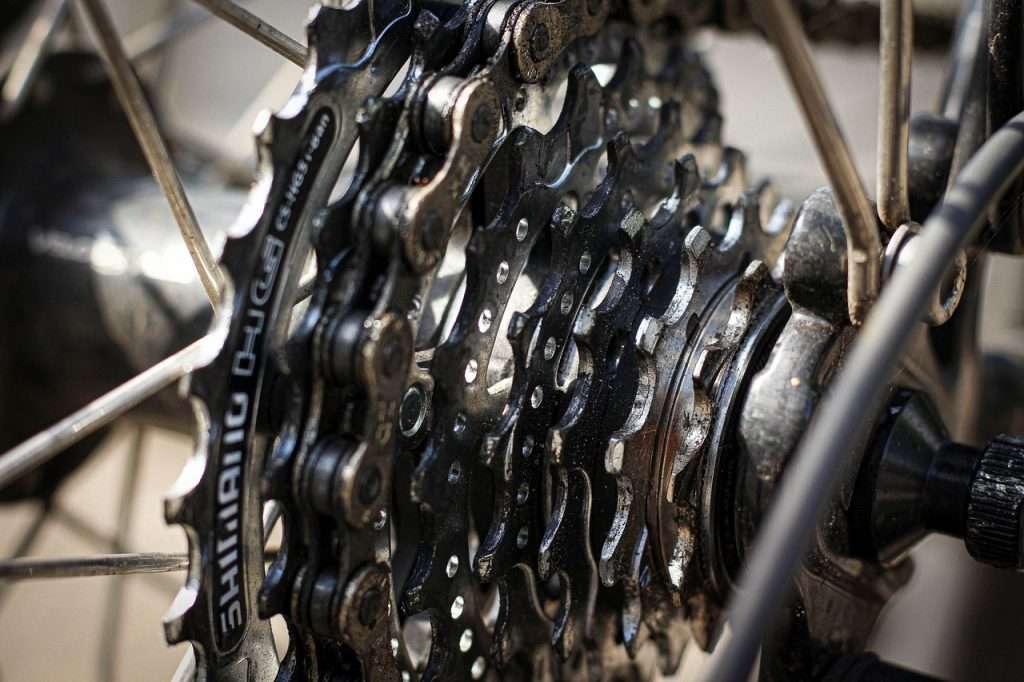
How bicycles chains work?
Introduction:
Bicycle chains serve as the silent conduits of power within the cycling world, quietly transferring the energy exerted on the pedals into the kinetic force that propels the bike forward. Despite their indispensable role in the cycling experience, the intricate workings of these unassuming components often go unnoticed. In this comprehensive guide, we will explore the structure, materials, maintenance, and underlying physics that govern the functionality of bicycle chains. By unraveling the mysteries of the bicycle chain, we aim to provide cyclists with a deeper appreciation for this fundamental yet often overlooked element of their rides.
Explanation
Anatomy of a Bicycle Chain:
A bicycle chain consists of a series of interconnected links, each serving a specific purpose in the overall functionality of the chain. The basic components of a chain include:

Outer Plates: These are the larger, flat metal plates on the outer side of the chain. They provide a protective layer and help guide the chain along the chain rings and cassette.
Inner Plates: These are the smaller, thicker metal plates on the inner side of the chain. Inner plates engage with the teeth of the chainings and cassettes to transfer power efficiently.
Pins: Pins hold the inner and outer plates together, forming the pivotal joints of the chain. The movement of these pins allows the chain to articulate and flex as it navigates the drivetrain.
Rollers: Rollers are small cylindrical components that rotate around the pins. They reduce friction between the chain and the teeth of the chain rings and cassette.
Bushings: Bushings are often found inside the rollers, acting as additional contact points that help reduce wear on the chain.
Materials used in bicycle chain:
Understanding the materials used in bicycle chains is crucial for appreciating their durability, efficiency, and overall performance. The most common materials include:
Steel: The majority of bicycle chains are made from steel due to its excellent strength-to-weight ratio and durability. Different grades of steel may be used to balance weight and strength, with higher-quality chains typically being lighter and more resistant to wear.
Alloy: Some high-performance chains use alloy components to reduce weight without compromising strength. Alloy chains are popular among competitive cyclists seeking the utmost efficiency.
Coatings: Chains may be coated with various materials, such as nickel or Teflon, to enhance corrosion resistance and reduce friction. These coatings contribute to smoother shifting and prolonged chain life.
The Physics of Chain Movement:
A bicycle chain’s main purpose is to transmit the force produced by pedaling to the back wheel, which moves the bike ahead. This process involves intricate physics that govern how the chain engages with the chain rings and cassette.
Chain Engagement: As the cyclist pedals, the chain engages with the teeth of the chain rings. The interlocking of the chain links with the chain ring teeth ensures that power is transferred efficiently from the pedals to the chain.
Gear Ratios: The combination of different-sized chain rings and cassette cogs allows cyclists to vary the gear ratio. Larger chain-rings provide more resistance, making it suitable for high-speed cycling, while smaller chain-rings are easier to pedal and ideal for climbing or acceleration.
Cassette Interaction: The chain also interacts with the cassette, a cluster of cogs mounted on the rear wheel hub. The cassette allows cyclists to fine-tune their gear ratios based on terrain and desired pedaling cadence.
Chain Maintenance:
To ensure optimal performance and longevity, regular chain maintenance is essential. Neglecting the chain can lead to wear, poor shifting, and a decrease in overall efficiency. Here are key aspects of chain maintenance:
Cleaning: Regularly clean the chain to remove dirt, grime, and old lubricant. A clean chain reduces friction, enhancing performance and prolonging the life of the drive-train components.
Lubrication: Apply a suitable bicycle chain lubricant to reduce friction between moving parts. Lubrication not only ensures smooth operation but also protects against rust and corrosion. You can buy Lubrication products from this link http://facebook.com/wbbicycles
Chain Wear: Monitor chain wear using a chain checker tool. Replacing a chain before it becomes excessively worn can prevent premature wear on the cassette and chain-rings.
Tension: Proper chain tension is crucial for efficient power transfer. Ensure that the chain is neither too loose nor too tight, as both conditions can lead to poor performance and increased wear.
Innovations in Chain Technology:
As cycling technology advances, manufacturers continuously develop innovations to enhance the performance of bicycle chains. Some notable advancements include:
Hollow Pins: Chains with hollow pins reduce weight while maintaining strength. This design is commonly found in high-end, lightweight chains for competitive cycling.
Narrower Chains: Narrower chains, such as those designed for high-speed drivetrains, contribute to smoother shifting and improved efficiency.
Master Links: Many modern chains feature master links, allowing for easier removal and installation without the need for special tools.
Coating Technologies: Advanced coatings, such as DLC (Diamond-Like Carbon) or PVD (Physical Vapor Deposition), enhance durability and reduce friction, providing a smoother and more efficient ride. You can ask any help from this link https://wbbicycles.com
Frequently Asked Questions (FAQs):
Question: What are the primary components of a bicycle chain?
Answer: The main components of a bicycle chain include outer plates, inner plates, pins, rollers, and bushings.
Question: Why is steel a commonly used material for bicycle chains?
Answer: Steel is favored for its excellent strength-to-weight ratio and durability, making it ideal for withstanding the demands of cycling.
Question: What is the purpose of chain lubrication?
Answer: Chain lubrication reduces friction between moving parts, ensuring smooth operation, protecting against rust, and prolonging the life of drive-train components.
Question: How can cyclists monitor chain wear?
Answer: Cyclists can use a chain checker tool to monitor wear, allowing them to replace the chain before it becomes excessively worn and preventing premature wear on other drive-train components.
Question: What is the significance of gear ratios in a bicycle chain?
Answer: Gear ratios, determined by the combination of different-sized chain-rings and cassette cogs, allow cyclists to adjust resistance and optimize pedaling efficiency based on terrain and desired cadence.
Conclusion:
Bicycle chains, though seemingly simple, play a critical role in the overall performance of a bike. Understanding the anatomy, materials, physics, and maintenance of bicycle chains empowers cyclists to make informed decisions about their equipment. As technology continues to evolve, cyclists can expect further innovations that enhance the efficiency, durability, and overall riding experience of these essential components. So, the next time you embark on a cycling adventure, take a moment to appreciate the intricate mechanism of your bicycle chain—the silent powerhouse that keeps you moving forward.

